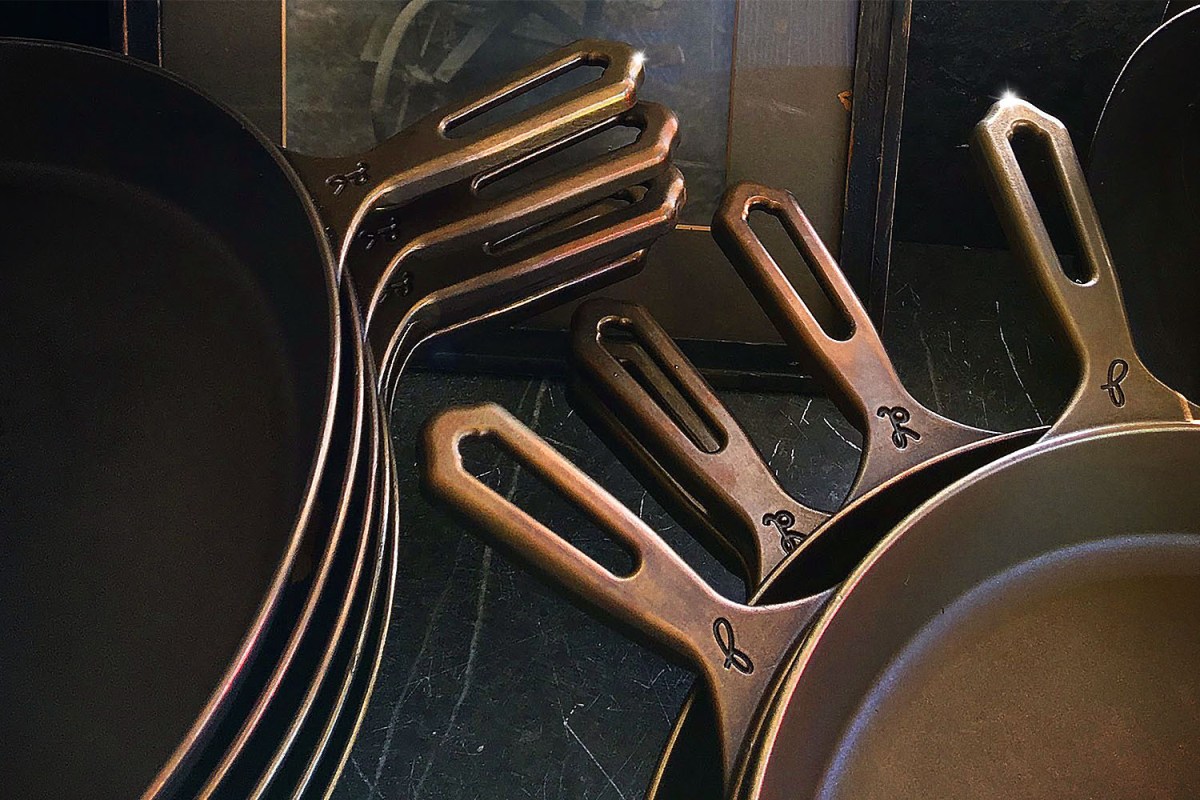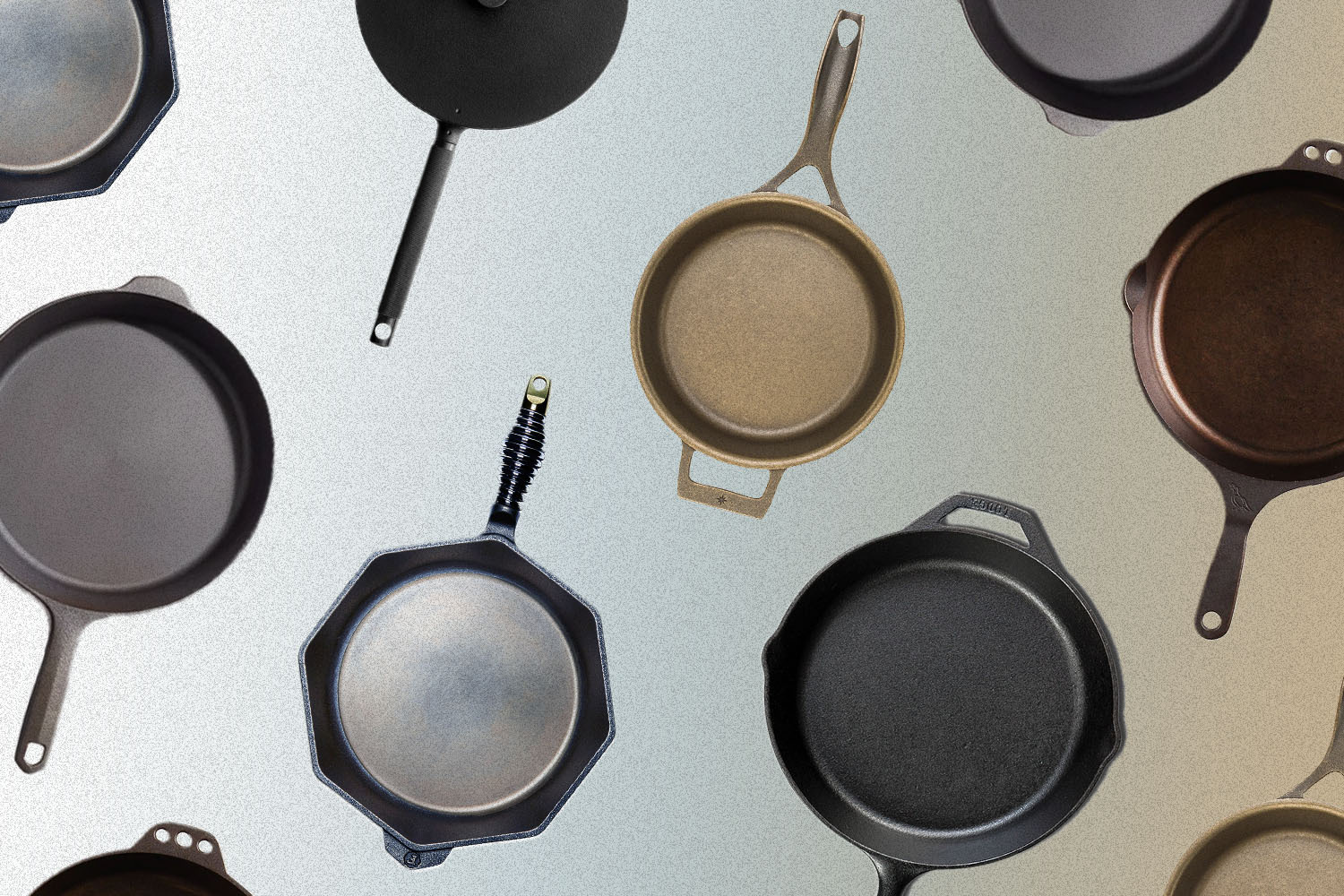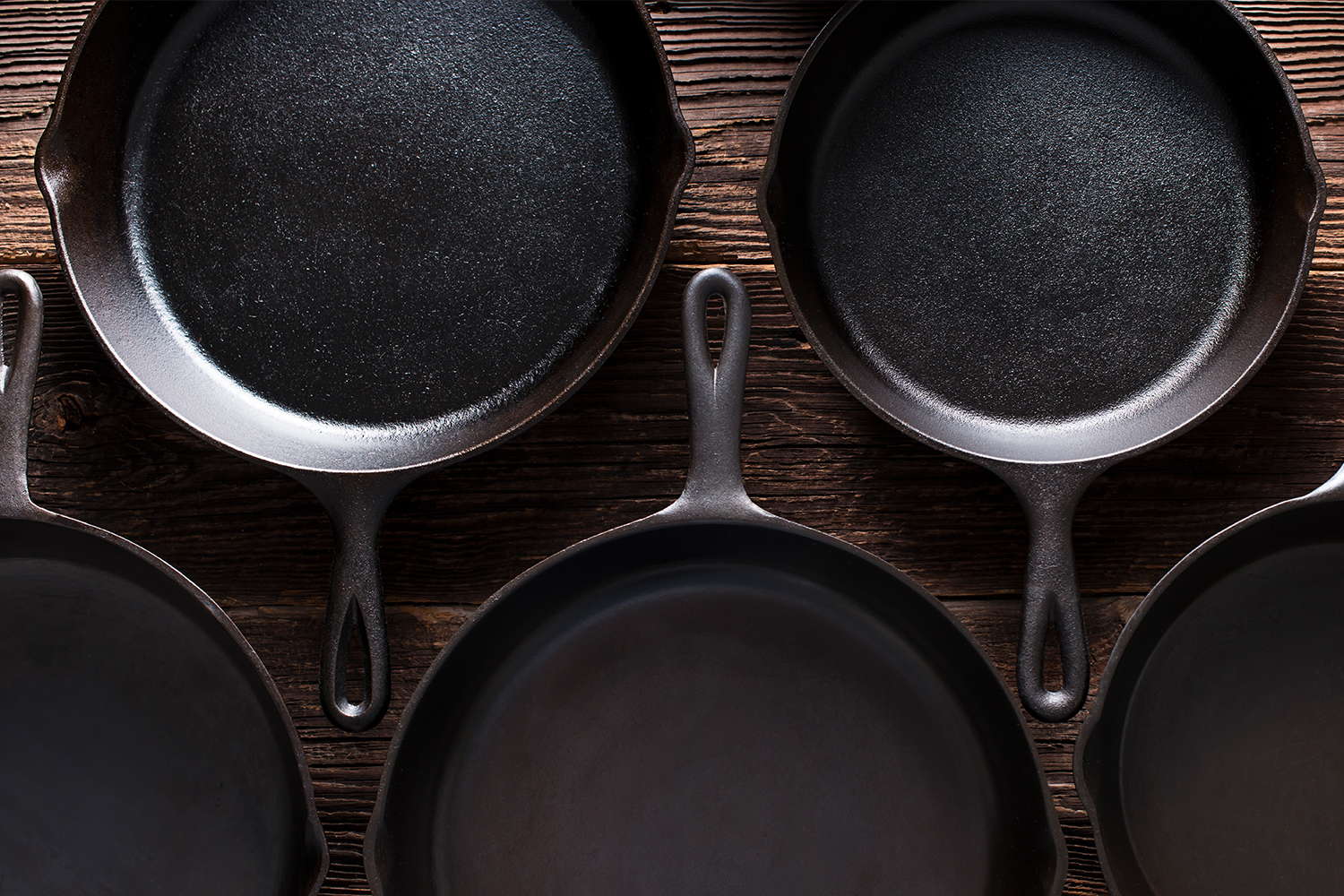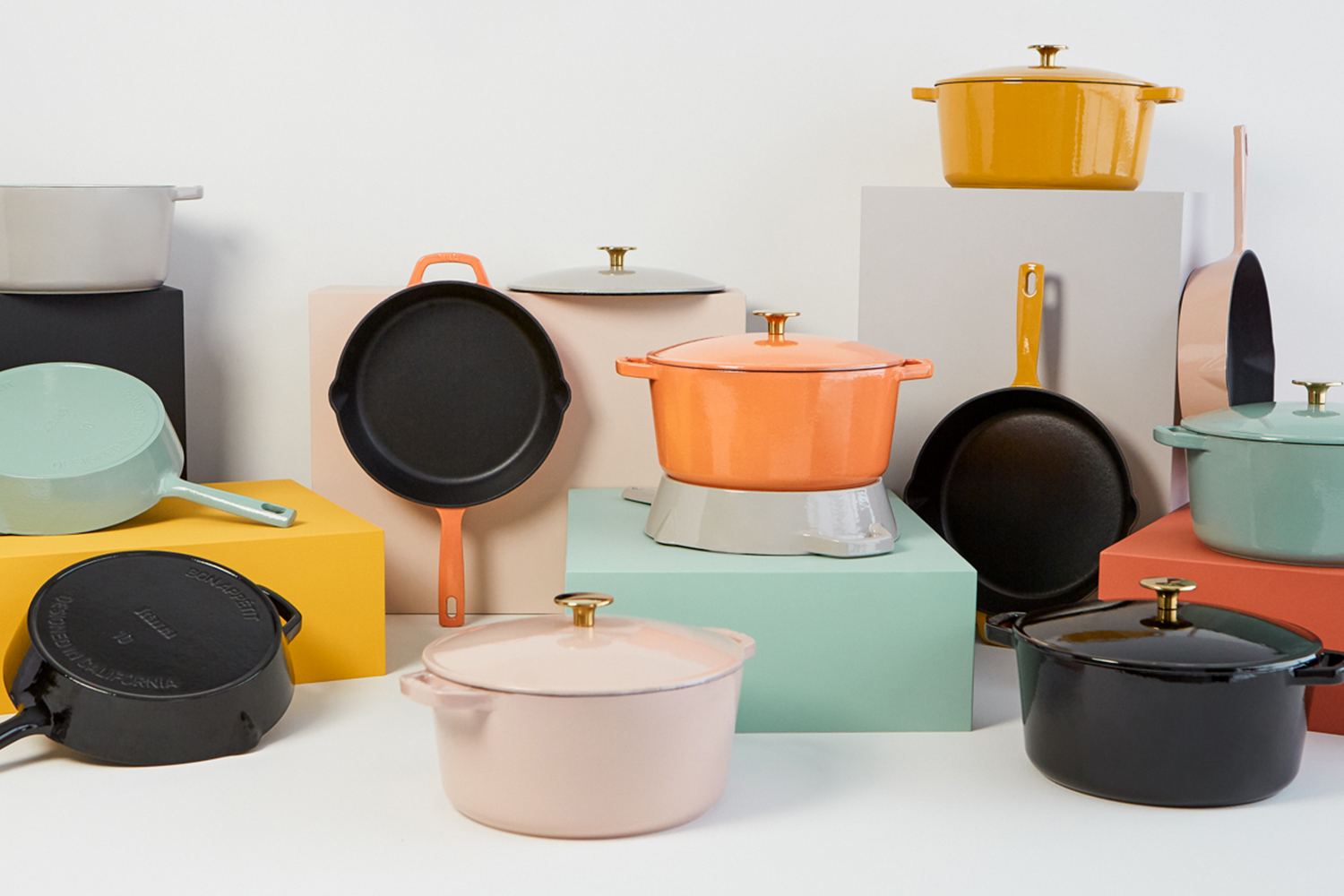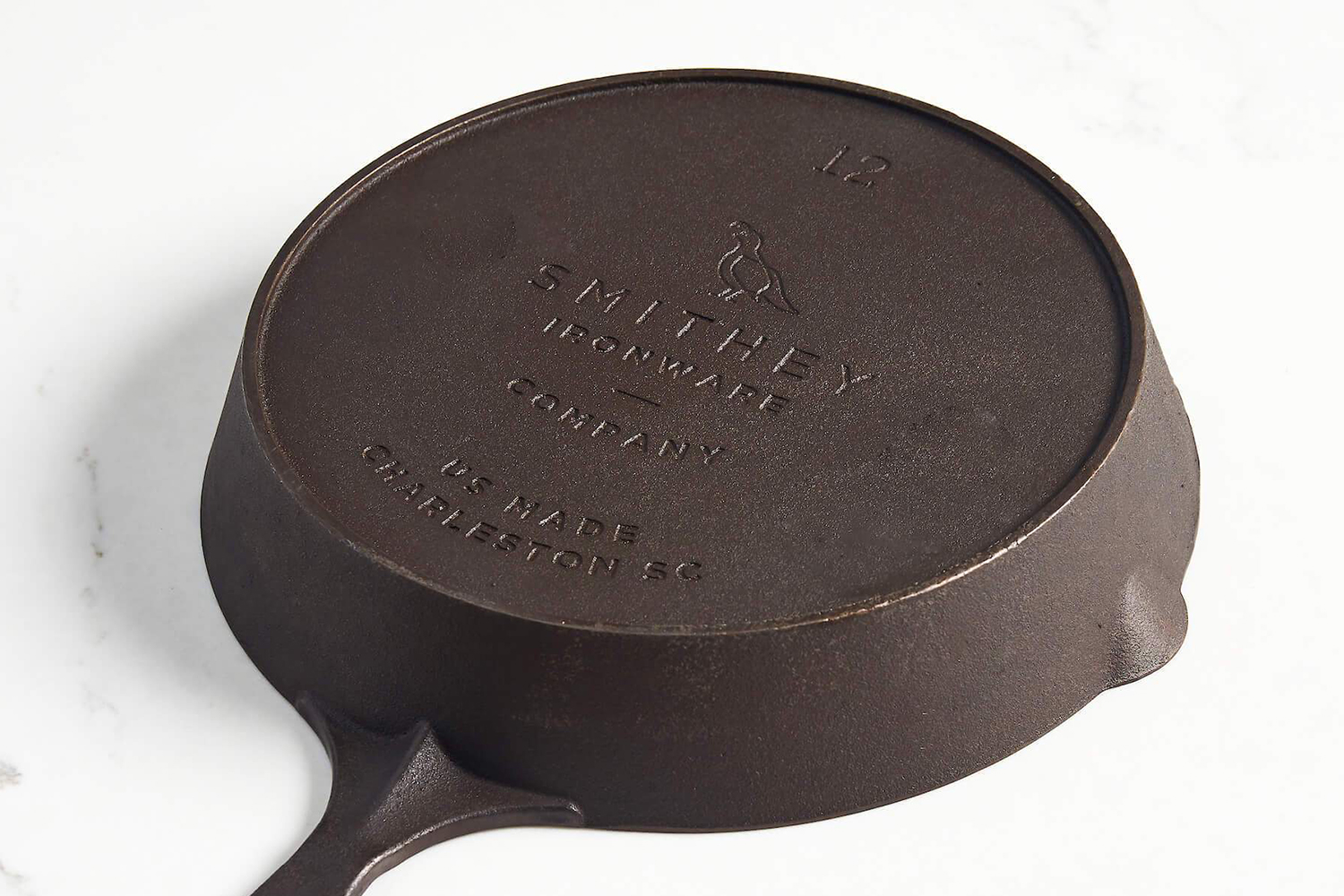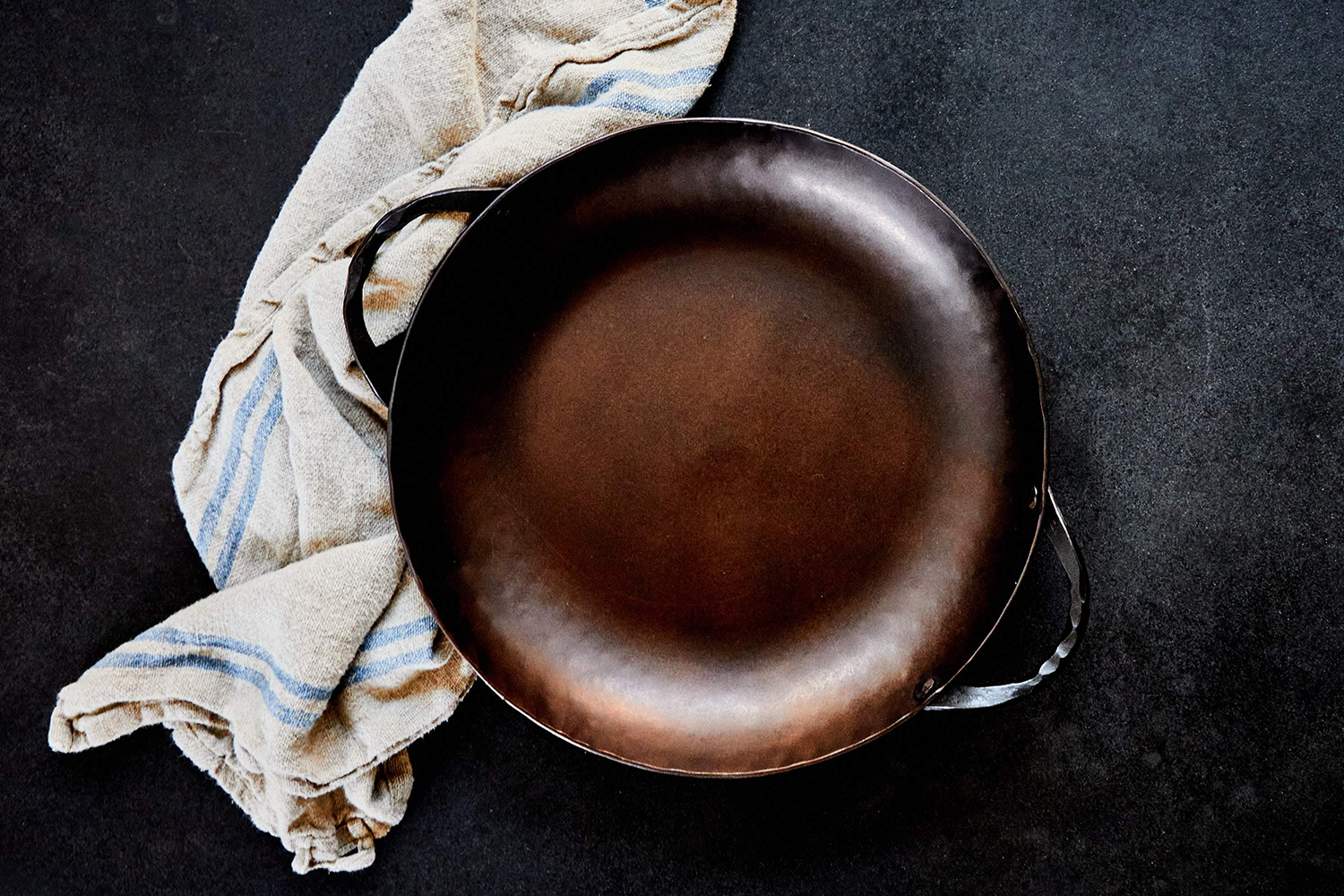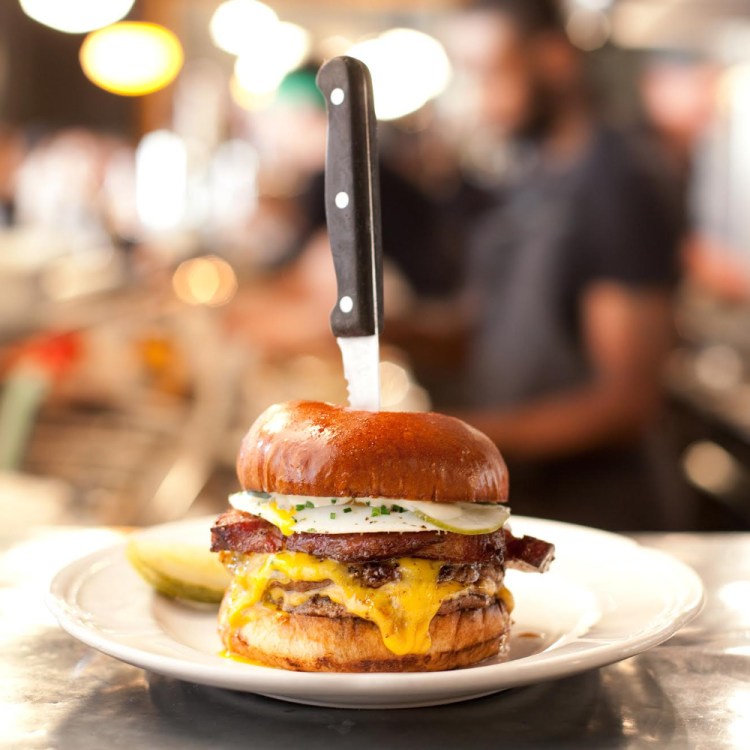For the last three months, I’ve been trying to think of the perfect way to describe Butter Pat Industries. You see, I’ve been cooking with the relatively young company’s 12-inch cast-iron pan, which they call the Joan and retails for $295, and have found it to be nothing like the other old-timey cookware I’m currently in the process of testing. And then, while watching TV with my family recently, it hit me: Butter Pat is the kind of company that would do terrible on Shark Tank.
I don’t watch Shark Tank regularly, and even if you don’t either you probably know the basic premise: a group of well-heeled investors evaluate elevator pitches in order to find the hottest new product that’s going to make them a boatload of cash. Here’s Butter Pat’s pitch, in a nutshell: Founder Dennis Powell spent six figures trying to make a cast-iron skillet that was just like the ones they made 100 years ago; he originally did it just for fun and had no interest in starting a business; now that he is in business, he has no interest in growing, and as he told me on a phone call, he has no problem roasting his customers who mistreat their pans. I can already hear Mark Cuban saying, “I’m out!”
By all modern standards of business, Powell has done everything wrong. But since 2013 when he founded the company, his skillets have become a favorite of chefs when cooking at home, received the highest marks of any cast iron that’s undergone the rigorous testing at Consumer Reports, and regularly rack up significant waiting lists despite being some of the most expensive on the market.
So what’s going on here? It all started with his grandmother’s pan.
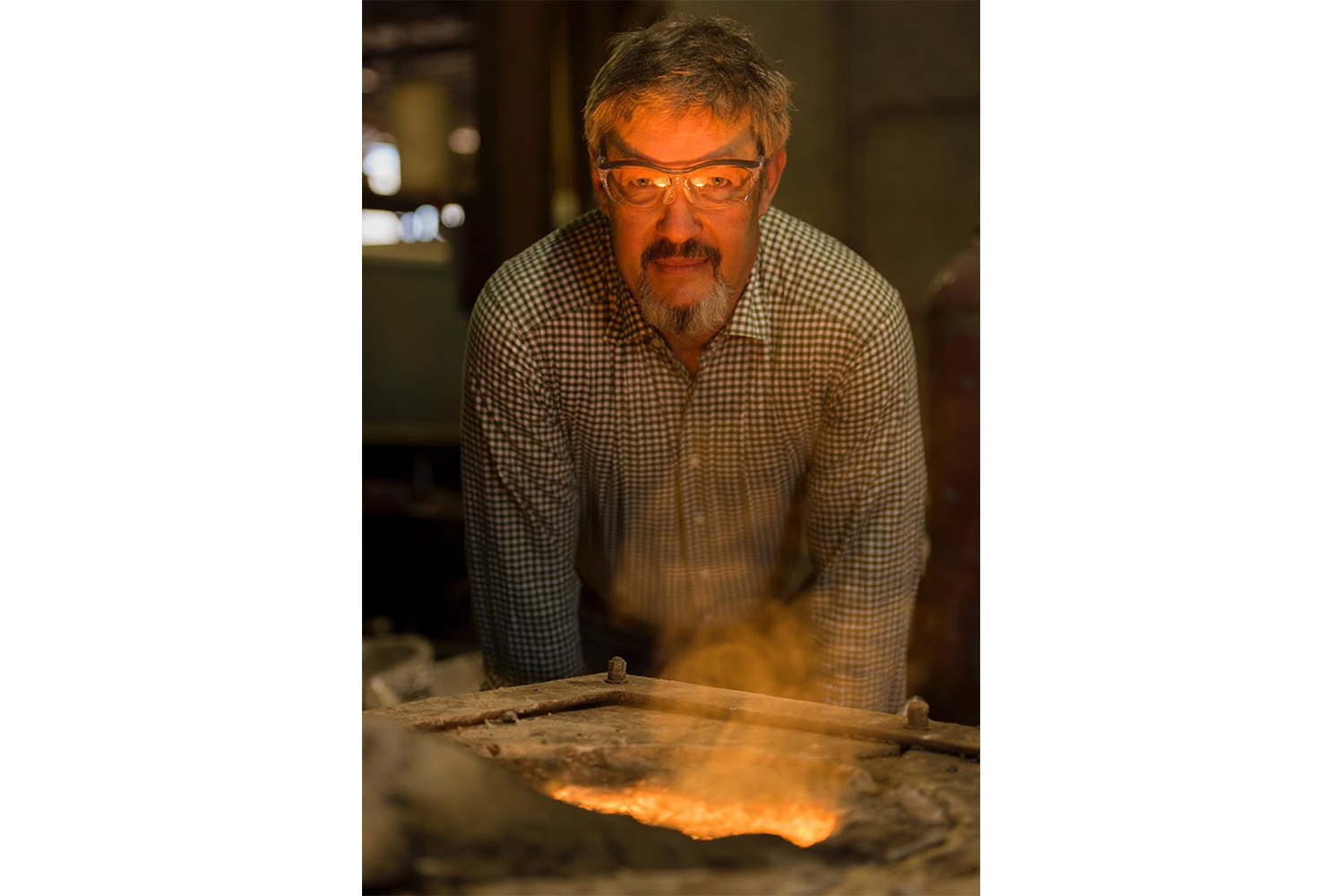
How Dennis Powell Built Butter Pat Industries
“The precipitating moment was: I was at home cooking, I dropped my grandmother’s pan, which was the only pan that I usually cooked with, I broke it — a great big crack in it,” Powell tells InsideHook of his favorite cast-iron skillet. “And since I’d always assumed that was going to be something I was going to give to my two kids, and I realized I wasn’t going to be able to do that, I decided that I was going to just replicate that pan, almost the way a sculptor goes about saying that they’re going to cast a bronze edition of a sculpture.”
What happened next was the slow boil of an obsession. He spent time researching in the Library of Congress, he pored over all the records from the Griswold foundry which he got from a friend who was president of the Wagner and Griswold Society, and he eventually visited 20-odd foundries in the U.S. to try and find one that could make a pan to his specifications. The walls of the skillet had to be thinner than modern iterations (3/32 of an inch thick), the cooking surface had to be smoother (a roughness average of 90) and it had to be made in the States.
“Every one of those foundries would say, ‘You can’t make cast iron to these specifications,’” he remembers. But at these meetings, along with his design brief, he also carried a century-old skillet from Favorite Stove & Range Company that had inspired his own design. “Then I would pull the pan out and say, ‘Well where did this pan come from?’”
After a good long while — which included some test castings at an Amish foundry in Pennsylvania that specializes in replacement parts for steam engines — what Powell discovered is that people don’t make them like they used to because modern technology has made it untenable; automatic molding machines are the norm, not hand-casting done one at a time.
“It wasn’t until 2015 when my wife said, you know you realize you have $100,000 tied up in your research — without exaggeration — and you ought to try to monetize this,” he says. But he was at a fork in the road. On one hand, he could do things like other modern cast-iron companies — brands like Finex, Field Company and Smithey — by creating a rough cast and then mechanically smoothing the pans, or he could develop a brand-new process from scratch that replicates cast iron of the late 1800s in the 21st century.
He chose the latter, and he succeeded.
What Makes Butter Pat Cast Iron Worth the Money?
I’ve seen Butter Pat pans referred to on the internet as the Ferrari of cast iron. That’s certainly true when it comes to price — you can get a Lodge skillet on Amazon for under $20, while these go as high as $395 — but it’s an imperfect metaphor. Anyone can hop in a Ferrari SF90 Stradale and understand why it costs $600,000, even if they don’t know anything about cars. But Butter Pat is more like the Patek Philippe of cast iron: their production is limited, they’re meticulously crafted, and the average person would have no idea why they cost so much, even after trying them in person.
Powell’s pans have even confounded some professional reviewers. In its testing notes, Wirecutter wrote that the pan “emerged with dark, blotchy stains from searing steak,” and went on to praise the performance of a $40 Lodge instead. It’s an odd comment, considering a sheet that is included with every Butter Pat pan includes the note, “Discoloration of your pan with cooking should be expected and is normal.” There’s also the fact that, simply to the naked eye, Butter Pat pans arrive in a light, almost bronze color while Lodge pans arrive black as night. Of course you’re going to see some cooking residue on one and not the other.
This is where the proprietary process comes in. There are two main ways cast-iron pans are made today: Lodge uses automated processes to make heavy, rough-surfaced skillets that need lots of seasoning to smooth out, while newer companies like Smithey and Field grind or mill their pans down to achieve a closer-to-nonstick surface out of the box. Butter Pat, meanwhile, is the exception; it takes about two weeks to make each pan, and that longer process allows them to get thin walls, an even cooking base and a smooth surface without any subtractive measures, and they finish it off with a trade-secret peening process that replicates the tumbling done to pans of yore. Thanks to that last step, the final product has a unique velvety feel; it’s a quality Powell was adamant to replicate from his favorite vintage skillets.
In fact, Powell sent me a small Piqua Favorite pan to compare to the one he’s created, and the result is shockingly similar in look and feel. The jury’s out on cooking comparison; as an antique, he didn’t want me accidentally breaking it like his grandmother’s pan. But in performance tests, Consumer Reports labeled Butter Pat “the only cast-iron pan to earn a Very Good rating for cooking evenness.” And in my personal cooking, it did everything from caramelized onions to cinnamon rolls to Impossible Burgers.
However, the thing to know about the Joan — the skillet I tested; they all have names like that, including Estee for his grandmother — is that it’s not magic. Food does stick to it. Heating is even on a commensurate burner, but if your burner is smaller than the pan then it’s going to cook a little unevenly. It certainly does take more maintenance than a nonstick pan. Unlike an appliance like a KitchenAid mixer or Vitamix blender, just because you spend the money here doesn’t mean your cooking experience is going to get easier. And because Butter Pat adheres to the original rules of cast iron, rather than those instituted by Lodge which include building up layers of seasoning — as Powells says, “frankly most of that is internet malarkey” — they’ll be frustrating pieces of cookware for many people to own.
But for the few who yearn for the heyday of cast iron, who prefer handcrafted American ingenuity over mass production (even when it comes with a few extra steps), and who would take a Patek Philippe over an Apple Watch any day, Dennis Powell’s pans are probably for you.
If not, if you prefer convenience over all else — when it comes to cooking and shipping — he won’t miss your patronage.
“We can only make so many, and that’s it,” Powell says. “So we’re not really interested in getting much bigger. We make what we make and if people don’t like waiting to get them, we really don’t give a damn. If you want them, you’re just going to have to wait for them.”
Join America's Fastest Growing Spirits Newsletter THE SPILL. Unlock all the reviews, recipes and revelry — and get 15% off award-winning La Tierra de Acre Mezcal.
